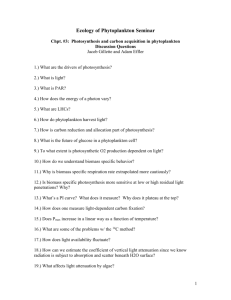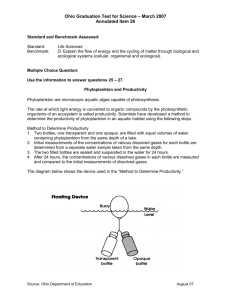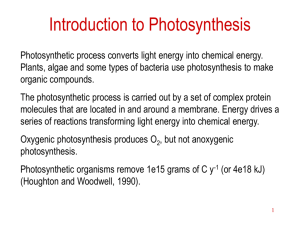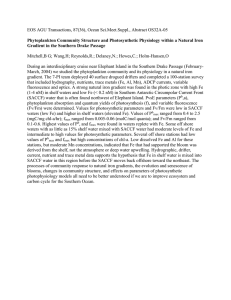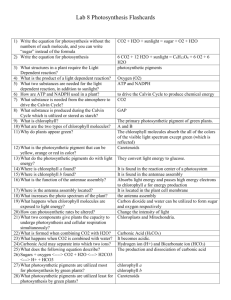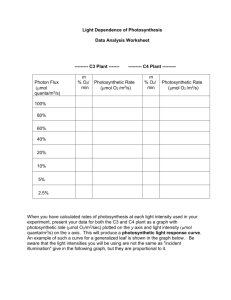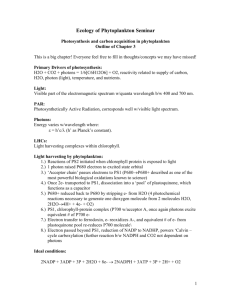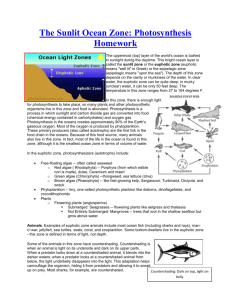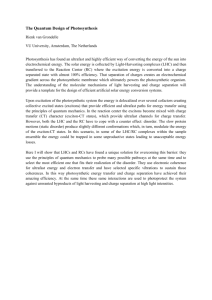Photosynthetic Parameters and Bio
advertisement
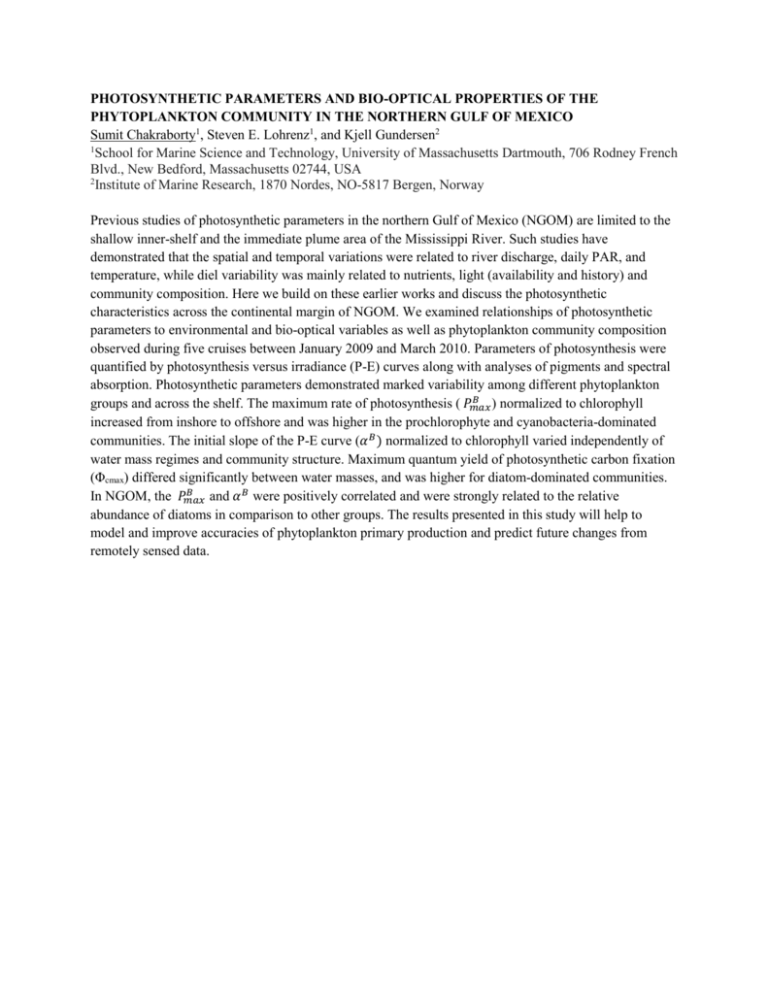
PHOTOSYNTHETIC PARAMETERS AND BIO-OPTICAL PROPERTIES OF THE PHYTOPLANKTON COMMUNITY IN THE NORTHERN GULF OF MEXICO Sumit Chakraborty1, Steven E. Lohrenz1, and Kjell Gundersen2 1 School for Marine Science and Technology, University of Massachusetts Dartmouth, 706 Rodney French Blvd., New Bedford, Massachusetts 02744, USA 2 Institute of Marine Research, 1870 Nordes, NO-5817 Bergen, Norway Previous studies of photosynthetic parameters in the northern Gulf of Mexico (NGOM) are limited to the shallow inner-shelf and the immediate plume area of the Mississippi River. Such studies have demonstrated that the spatial and temporal variations were related to river discharge, daily PAR, and temperature, while diel variability was mainly related to nutrients, light (availability and history) and community composition. Here we build on these earlier works and discuss the photosynthetic characteristics across the continental margin of NGOM. We examined relationships of photosynthetic parameters to environmental and bio-optical variables as well as phytoplankton community composition observed during five cruises between January 2009 and March 2010. Parameters of photosynthesis were quantified by photosynthesis versus irradiance (P-E) curves along with analyses of pigments and spectral absorption. Photosynthetic parameters demonstrated marked variability among different phytoplankton 𝐵 groups and across the shelf. The maximum rate of photosynthesis ( 𝑃𝑚𝑎𝑥 ) normalized to chlorophyll increased from inshore to offshore and was higher in the prochlorophyte and cyanobacteria-dominated communities. The initial slope of the P-E curve (𝛼 𝐵 ) normalized to chlorophyll varied independently of water mass regimes and community structure. Maximum quantum yield of photosynthetic carbon fixation (Φcmax) differed significantly between water masses, and was higher for diatom-dominated communities. 𝐵 In NGOM, the 𝑃𝑚𝑎𝑥 and 𝛼 𝐵 were positively correlated and were strongly related to the relative abundance of diatoms in comparison to other groups. The results presented in this study will help to model and improve accuracies of phytoplankton primary production and predict future changes from remotely sensed data.

